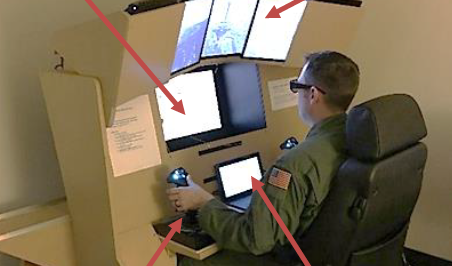
United States Air Force (USAF) vision tests have largely remained unchanged since WWII and therefore, it is unclear whether current standards are applicable for users of new humane-machine interfaces (e.g., stereoscopic remote vision system (RVS) in the KC-46 refueling tanker). This study examined the relationships between a range of early vision assessments, including Operational Based Vision Assessment (OBVA) lab-developed tests, an electronic version of the standard Titmus test, and the current Armed Forces Vision Tester (AFVT), and air refueling task performance using a stereoscopic RVS. Additionally, the relationships of these vision test scores to operationally-relevant subjective measures of visual fatigue were assessed. Results showed that OBVA measures of disparity discrimination, horizontal fusion, and horizontal phoria correlated with air refueling performance. OBVA measures of acuity, contrast sensitivity, disparity discrimination, and radial motion sensitivity were significantly associated with subjective measures of discomfort and visual fatigue. Notably, neither the electronic Titmus results, nor the AFVT measures were not associated with either air refueling task performance or subjective measures of discomfort and visual fatigue. Adjustments to the vision standards and test methods used for USAF aeromedical vision screening should therefore be considered.